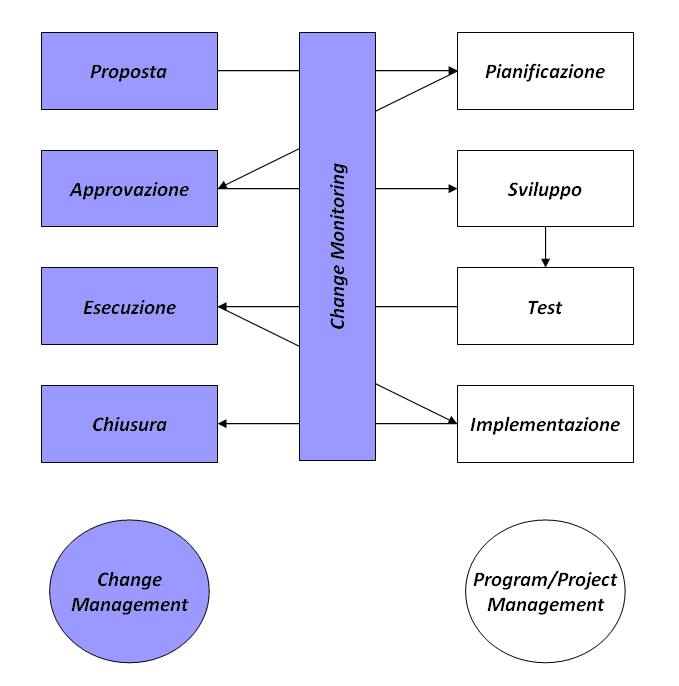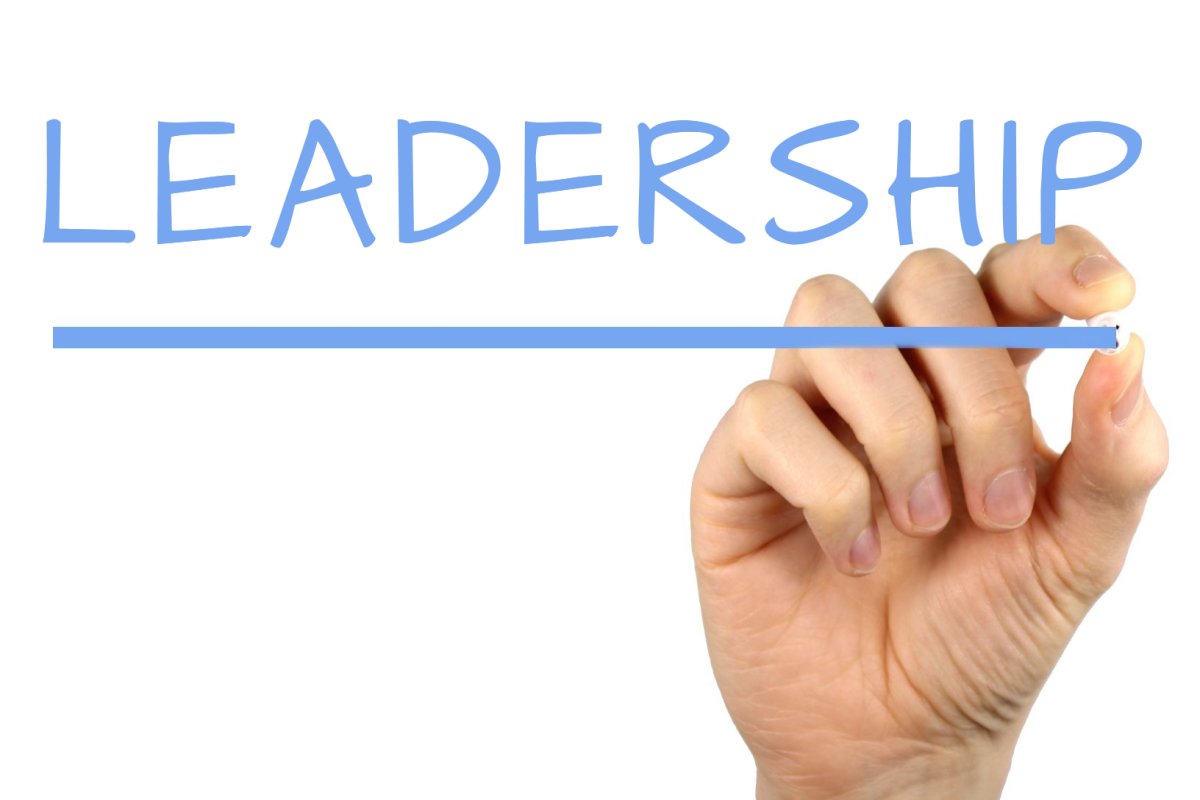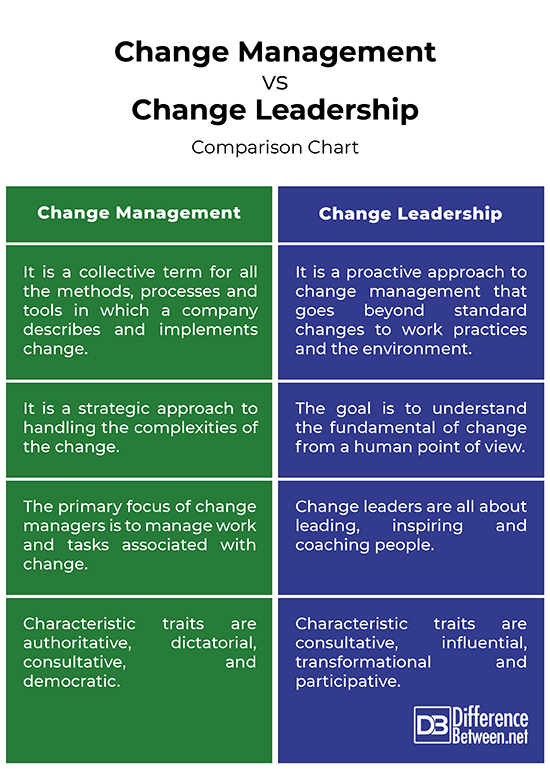Difference Between Change Management and Change Leadership
We live in a constantly evolving world wherein virtually every industry is experiencing a massive or sometimes dramatic change every now and then, which means the world around us as we know of is constantly changing. This so-called change we’re talking about is becoming more and more tech-driven. Change seems to be the only constant in this ever-changing and evolving world. Change is the new order of the day, especially for the organizations who struggle to keep up with this evolution. Rapidly changing customer habits, access to constantly evolving technology, and social media accelerate the way organizations cope up with the changing world in order to remain competitive or even survive. This leads to our topic of the hour – what is the difference between change management and leadership? As much as the two terms sound interchangeable, the difference between them is quite significant.

What is Change Management?
We often hear the term “change management” in lectures or seminars and how organizations must face the consequences of not adapting to the change in an organization. But what is change management and how does it work? Well, change management is a collective term for all the methods, processes and tool in which a company describes and implements change both internally and externally within an organization. It is a set of standardized procedures and techniques to support organizations, leadership teams and employees undergoing a transition from one state to an improved state or you can say, state ‘A’ to the improved state ‘B’. Traditionally, change management was all about communications and training delivered just before the implementation of a new change. But today, in times of constant evolution, change management is considered as a strategic approach to change by leading organizations who strive to keep ahead of their competition or potentially even help them to survive.

What is Change Leadership?
Leadership is an interesting subject that has long fancied by scholars and lay people alike. Leadership refers to a very sensitive position in almost any effective-driven business organization. Change leadership has long seen as a proactive approach to change management that goes beyond standard changes to work practices and the environment. Change leadership goes beyond motivation and mobilization efforts; it’s the ability to influence and inspire others to understand and agree about what needs to be done and how to accomplish shared objectives collectively as a team during a period of growth or uncertainty. Leadership means leading through others and inspiring a vision in developing a strategic plan to manage large-scale changes within an organization. Change leaders consistently use strategies to improve their own approach to change and then share those strategies with those they lead and inspire, effectively bringing about a sustainable organizational change.
Difference between Change Management and Change Leadership
Meaning
– Change management is a collective term for all the methods, processes and tools in which a company describes and implements change both internally and externally within an organization. It is a strategic approach to support organizations, leadership teams and employees undergoing a transition from a current state to a much improved future state. Change leadership, on the other hand, is more about putting an engine to the whole transition process to bring about a sustainable organizational change. It is a proactive approach to change management that goes beyond standard changes to work practices and the environment.
Goal
– Change management is a strategic approach to handling the complexities of the change. It is about evaluating, planning and implementing the changes in a way to make sure things do not go out of control. The goal is to leverage the most appropriate tools and techniques to successfully implement new business strategies to transition organizations, leadership teams and employees while minimizing the negative outcomes of the change. The goal of change leadership is to understand the fundamental of change from a human point of view.
Responsibilities
– The role of a change manager is to create a plan for implementing change management strategies, and then tracking change management deliverables that include communication, change impact assessment, training, direction, defining goals and measuring success. The primary focus is on managing work and tasks to build on change and its achievements in order to address the issues associated with change over time. Change leadership looks at all aspects of an organization including processes, culture, management and employees to develop an environment to make change work optimally. The primary focus is on bigger picture and how to lead and inspire people.
Change Management vs. Change Leadership: Comparison Chart

Summary
In a nutshell, an ideal change leader would be a hybrid of both the change manager and the change leader. Change creates different responses from different people for a variety of reasons. Simply implementing a change management strategy that involves restructuring the organization will not produce long-lasting results. The people need to change too in order to allow the organization to successfully adopt the change. Organizations need to inspire people to desire growth and newness because every change starts with us – the people. For that, they need change leaders with the skills to inspire, influence, guide and coach people towards a new vision.
- Difference Between Caucus and Primary - June 18, 2024
- Difference Between PPO and POS - May 30, 2024
- Difference Between RFID and NFC - May 28, 2024
Search DifferenceBetween.net :
Leave a Response
References :
[0]Tang, Keow Ngang. Leadership and Change Management. Berlin, Germany: Springer, 2019. Print
[1]Beerel, Annabel. Leadership and Change Management. California, United States: SAGE Publications, 2009. Print
[2]McCalman, James. Change Management: A Guide to Effective Implementation. California, United States: SAGE Publications, 2000. Print
[3]Cran, Cheryl. The Art of Change Leadership: Driving Transformation In a Fast-Paced World. New Jersey, United States: John Wiley & Sons, 2015. Print
[4]Image credit: https://www.picpedia.org/handwriting/images/leadership.jpg
[5]Image credit: https://commons.wikimedia.org/wiki/File:ChangeManagement-ProjectManagement-Relazioni.jpg
